#Exercise tips
Explore tagged Tumblr posts
Note
I want to start running...any tips?
I WAS BORN TO ANSWER THIS QUESTION. Thank you so much for asking! Unfortunately, I am a nerd about my hobbies so this got quite long.
Keep it simple ✨
Running is easy to get into; our bodies are built for it. Don’t stress over technicalities and just do what feels natural to you. My local races are full of 70-something white-haired pensioners who are kicking ass at it. Don’t let anyone tell you that running is meant to feel like dying, that’ll harm your knees, or that you absolutely need to have that specific smartwatch model to get into it. All you need is a solid pair of shoes, everything else is optional.
Medium effort is the way to go
The ideal aerobic running pace is a speed at which you’re able to hold a conversation, even if a bit winded. NO faster. If you’re able to sing along to your playlist or chat with a friend, that’s your ideal running pace. If you’re gasping or wheezing, slow down! You’ll get a bit faster as your lung capacity gets better, but that shouldn’t be a priority unless you want to train for a race. You get most of the health benefits of running just by keeping up a steady, sustainable, conversational pace.
Walking breaks are fine, actually
That’s the reason why I don’t love C25K as a beginner program — the way it’s structured sort of implies that walking breaks are something you should grow out of to become a more experienced runner. If you need to walk for a bit, go ahead.
If possible, jogging is preferable, just because the mechanics of even a glacial-pace jog are more similar to running than those of a faster power walk, so you might try switching to a jog after a bit of a walking interval. But walking is not a failure; there are serious marathon training plans out there that use walk/run intervals as a viable strategy.
(Related: picking up speed helps you keep going! If you feel like you are completely drained, try speeding up for a very short interval, then slowing back down. It’ll often give you an energy boost to keep going)
Run for time, not distance ⌚
Especially for beginners, I find that getting fixated on numbers can be counter productive, and the most important thing is to listen to your body. If you’re aiming to hit a certain mileage, you might get the urge to speed up at the end to get done faster. Instead, set yourself time-based goals and end every run with a cool down jog or walk.
SHOES!! 👟
Good running shoes are essential, and pretty much the only fitness-related purchase on which I’ll always support dropping money. If you get to the point where you’re consistently running 10 km (6 miles) each week, you’ll want to go to a running store — the kind of place where you’ll get fitted, and they’ll have you try on models and jog on a treadmill to evaluate your gait and let you know which characteristics your ideal shoe needs. I can’t stress enough how useful running store staff can be. They’re all running club nerds who LOVE getting new people into running, and they really want to help you find your ideal fit. Also get good running socks while you’re at it.
Be prepared to drop at least 100€ (or equivalent currency) but they usually have a great return policy if the model isn’t a good fit for you. Take care of your running shoes — maintenance, wearing them only for running, gentle cleansing etc — and the cushioning will last for quite a while (600km / 370miles at least). If you decide that you hate running, they’re still great for walking around. Once you find your ideal shoe model, it gets a lot easier to shop for it during end-of-season sales, or looking for online bargains etc. I love stocking on end-of-series shoes and rotating them so they’ll last even longer, and I buy online quite often! Just make sure your FIRST pair is fitted, for ideal injury prevention and joint health.
Injury prevention ���
I’d love to still be running 10k races when I’m 70, but it takes some care to get there. When you run, you’re slamming your body weight up and down with every stride, and that might be hard on your joints if you’re not used to it. If you’re completely new to running, cap your runs at 15/20 minutes every other day. Do that even if you feel like you could keep going! If you have a good aerobic base already, you need to give your joints time to catch up with you lung capacity, and give your body time to recover. Do bodyweight exercises like lunges and planks and glute bridges to strengthen your core, legs, and hips. Dynamic stretches are great for warmups, and static stretches are better for cooling down. If you have the option, running on softer surface like grass or dirt is better than asphalt, which is better than concrete and pavements.
(If nothing of what I’ve said here makes sense to you, shoot me another ask, or look at some of the resources I’ve linked down below!)
Don't get bored! 🎶
I love running in groups. Running clubs are great. You can learn so much in a hands-on way from seriously experienced people, you can chat about gossip over a running job, and you can make some interesting friends. If you don’t have access to a running community, then personally I love just chilling on a run by myself listening to an audiobook or podcast or exploring a certain area.
Running form❓
Don’t stress about it. Just go out and move your body. Attempting to modify your ‘running form’ too quickly can do more harm than good. There ARE a few things you could pay attention to — I recommend trying to focus on one of these at a time for a minute or so, and alternate between them. After a while, it’ll start to feel natural to keep track of all of them:
1. Don’t slouch! But a slight lean forward is great.
2. Keep your shoulders pulled down and your upper back tense.
3. Swinging your arms in a way that helps with your stride is good, but I shouldn’t feel forced.
4. Even breaths, inhaling through your mouth and expiring through your nose.
5. Take turns to check with every part of your body, and relax them in turn: are your jaw and neck too tense? Are your fists tight?
6. Don’t overstride! shorter strides with quicker leg turnover are better than huge strides that feel awkward to you.
7. Use your glutes to drive up the motion of your legs, not just your quads. This can take a while to get used to, but it’s a game-changer.
8. ENGAGE YOUR CORE. This is a great skill to develop whether you work out or are just existing in the world — basically, let your inner abdominal muscles help you carry your weight forward. This is VERY intuitive once you know how to do it, but it’s hard to get a grasp of it if you don’t know what it means, so here are some resources about it.
an extremely fucking comprehensive article that improved my life and eased my big-boobs back pain
similar content but in video form
a running-specific form video
Personally, learning to do this made me feel like I unlocked a superpower. Go forth and brace.
Accessories and tips 🤓
Like I said above, the only thing I really suggest spending money on for real is running shoes. Everything else is details! However, I’m nothing if not wordy I have Thoughts about those details, too.
Run tracking: I suggest downloading Runkeeper if you want to keep track of your runs — it’s free, intuitive, and solid! If you decide to get into wearables, a low-level Garmin >>>>> anything else.
Self-care: use sunscreen and/or thick face cream as needed. Stop to sip at a public fountain if needed. Get a small fanny pack to hold your phone, keys, or lip balm if needed. If chafing is an issue, anti-glide gel is relatively affordable.
Outfits etc: I get all my running gear and clothes from Decathlon — they are in most countries and ship worldwide. I especially love this thermal shirt for colder weather
Safety: if you’re running on the road, make sure to run in the opposite direction from traffic and to wear something bright. If you run with headphones near traffic, keep the volume down, or get over-the-ear conductor headsets. I love shokz, they're fantastic.
Post-run snack: eating something small and carb-heavy within 30 mins of a workout is great for kickstarting recovery. I love dried fruit personally.
Various resources 📝
Routine basics: check out the r/running order of operations, which is a great “how to” guide to building a basic running routine. I also recommend that subreddit's wiki! Running programming gets exponentially more involved the more advanced you get, etc — if you ever have any questions, hit me up!
Dynamic stretching warmup: a quick leg swing workout to get your legs ready to go. If you’re feeling overachieving, here’s a lunge warmup routine and a how-to bodyweight squat video.
Cooldown routine! Check out Strength and Mobility, a great post-run quick cooldown routine that includes some bodyweight exercises to strengthen your hips and core. Video included.
that's all, folks! 🏃♀️
Sorry I got carried away! I love running. I love getting people into running. My mental health, cardiovascular system and my popping quads also love running. But FYI, some people hate running and that's also fine! If you decide it’s not for you, find something you like more. There are a lot of misconceptions out there and a lot of guilt-tripping and body shame-y rhetoric around exercising, especially aimed at women, and I want to make clear it’s all bullshit. Just have fun <3
#Anonymous#ask#jockposting#running#fitblr#exercise tips#running basics#exercise#runblr#long post#for reference I mostly run in brooks ghosts but I use the levitate for speedwork and more intense long runs#I stock whenever there's a sale on runnea or runningwarehouse or whatever#pinned
1K notes
·
View notes
Text
Workout Tips for beginners/chronic pain
For those of you who don’t know me I am trans and physically disabled (also autistic and have anxiety and depression and ptsd) anyway working out has been something that was totally off the table for me for a long time but lately my energy and motivation have improved somewhat as well as my dysphoria being worse which has made me want to try to working out again.
This legitimately isn’t a post I ever thought I’d be making but being pre T and closeted it felt like the only thing I could do to have some control over my body and I really wanted to try. It took me a couple of months after first getting the idea to actually feel like I was in a place to try and as well as finding a good program. I really didn’t want to put money into this especially because I had no idea how it would go, I’m currently on my second week of working out so I thought I’d share some advice for anyone else in a similar position.
Also, as a disclaimer, not everyone with chronic pain or other disabilities can exercise and there’s definitely been times when I also couldn’t so this purely for people who are in a place where they want to and are safe to try.
- Balance is everything, I say this as a total hypocrite just to be clear but if you haven’t worked out in a long time (I would say it’s been around three years for me) you can’t expect to go super hard right away
- Don’t worry about speed or reps or anything like that, doing your best is the most important thing and trying to take that pressure off yourself helps
- Honestly do fewer reps, shorter times, modify or substitute exercises, skip certain things- none of that is a big deal even if it feels like it is and whether you can do some of it later or not it’s okay
- I don’t see physical results yet which isn’t a surprise but I can feel more muscles when I flex my stomach which is cool and even after a week and a half with a lot of rest days I can do more than I could at the beginning
- Low impact is still a hard workout and it is much easier on your body, highly recommend for people with chronic pain
- Now one of the most important things I’ve learned is that I do not have the option of not warming up and doing cool down stretches, my body cannot handle it if I skip those steps which unfortunately makes everything take so much longer but again for anyone with chronic pain it’s probably better to cut down the harder bits and do a warm up and cool down
- The one time I did skip cool down stretches because I had errands to run and thought walking around would be enough I couldn’t sit or stand up straight the next day because I was in so much pain and the muscles in my hips and legs hurt so badly I had to take a break for several days
- I’ve also found that doing full body stretches after working out significantly reduces pain the next day (at least for me) to the point where after a week of working out I feel more sore than in proper pain
- If certain exercises are too much for your body skip them or do another exercise instead, the pain really isn’t worth it and it’s way too easy to injure yourself or cause a flare up
- Sometimes you can do exercises at the beginning but can’t do multiple reps, I’m serious about listening to your body, especially if you’re disabled. I pushed myself a bit too hard today and managed to hurt my wrist and neck (wrist because I did too many workouts in a plank position and the weight on my wrists was too much, neck from crunch type exercises that strain my neck which can cause headaches/migraines the next day)
- Not related to physical disability but I have some demand avoidance tendencies and personally not telling anyone in my life I’m doing it has been one of the most helpful things in not having to deal with external pressure or expectations (I know for other people outside accountability helps so it just depends on what helps you)
- If money is a concern or you’re not sure if you’ll be able to be consistent long term just working out in underwear is a good option, also there are tons of different types of free bodyweight workouts on YouTube, the only thing I’ve bought so far has been a mat
- Onto the next point, get a mat, preferably s as thick exercise mat with a lot of cushion and not a yoga mat. I didn’t realize there was a difference but there absolutely is and for me having more cushion makes a huge difference on my joints
- I personally have been doing Chloe Ting because I’ve seen a lot of people with a lot of different body types get results after being consistent and because after trying it for a week I feel stronger. That being said they’re also not easy and I have made a lot of adjustments and had to take breaks after causing flare ups but all these tips have helped me find more sustainable ways to exercise instead of doing it once and burning out
- I don’t do explicit cardio EVER, I have tachycardia and get dizzy and lightheaded really easily so even doing bodyweight exercises and low impact my heart rate ranges from 150bpm-180bpm the entire time with breaks.
- Also, drinking lots of water is supposed to be good, I don’t track it but I try to stay hydrated and it probably helps
- Prioritize sleep if you’re able to
- Hot showers after working out also help me manage muscle pain
- Finally for food I’ve been trying not to eat unless I’m actually hungry as I have a habit of eating if I’m bored and trying to incorporate more healthy food into my life rather than cutting anything out. Also healthy being subjective, I’m trying to eat healthier than I used to but that still isn’t like tons of salad and veggies and stuff so whatever you can do is fine
- I’m definitely not following all these myself but I’m working on it and trying to improve
#trans#transmasc#transgender#working out#beginner workout#disability#chronic pain#gender affirming#exercise tips
19 notes
·
View notes
Text
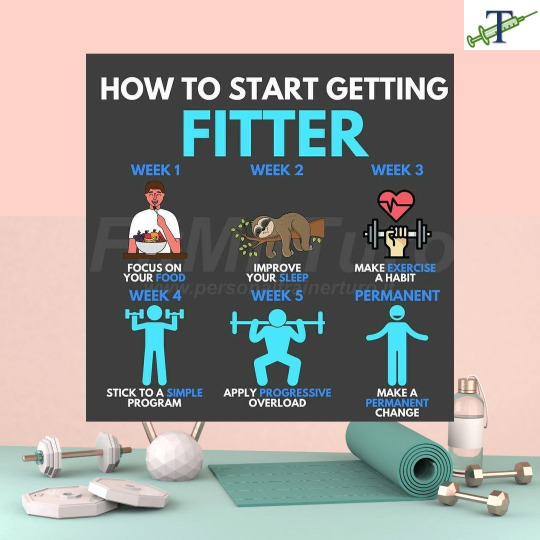
Fitness Friday 11.22.24
Now is a great time to start laying the groundwork for new habits. If you start now, by the time Jan 1, 2025 rolls around you'll be weeks into a new fitness routine. Remember to always consult with your medical provider if you have physical limitations before implementing any new diet or exercise. Let's get fit 2025!
#FTM#F2M#transmasculine#trans man#transgender man#nonbinary#FTM fitness#FTM workout#FTM wellness#fitness tips#genderfluid#genderqueer#agender#bigender#demiboy#exercise tips#twospirit#genderflux#pangender#exercise#FTMbinder#FTM wellnes
7 notes
·
View notes
Text
Based on recent events, apparently my stupid hyperactive gremlin exercise takes are helpful, so I figured I may as well cobble them together and make a post about it.
Disclaimer here that not every example I give is going to apply to everyone and all that jazz, but hopefully the broad ideas are useful.
You don’t actually need to do a certain number of reps or miles or whatever - it can be helpful if you want to measure your progress, but if it’s not fun, you can just… not do it. Instead, you can do the thing until it stops being fun, and if your goal is to do the thing better or faster or more, if you keep doing it until it stops being fun, you’ll improve a tiny bit every time, and eventually, you’ll tire out a lot less quickly.
"I should exercise” feels kinda like a non-sequitur to me; there’s a ton of ways you can do that, and a lot of different things it can accomplish. Instead, ask yourself what it is you actually WANT to do (i.e., “I want to have less back pain,” “I want to be outside,” “I want to get better stamina so I can climb this mountain”). And when that’s hard because there are a lot of things you want to do at once and you’re not sure where to start, pick the easiest first, and go from there.
Sometimes you don’t want to stop the thing you’re doing to go move around and junk, and I did not realize that people actually put all their other stuff on hold to go do that? And that's why a lot of people think exercise is boring? Anyways yeah you can watch videos or listen to podcasts or audiobooks or hang out with friends while moving around. I can’t listen to or watch anything without doing something else, so this just sorta Happens for me, but yeah if the idea of exercise sounds boring to you, you can totally spice it up a bit.
Exercise doesn’t need to be rigorous daily routines. It can be (and occasionally, that's helpful if you’re trying to do a specific thing), but it can also just be doing things that involve moving around on a day-by-day basis. Like, it can be “today I want to go find cool rocks in the woods” or “today I feel sore, so I’m going to do some stretches,” or “today I’m going to go swimming because it’s hot as hell.”
Also! Walking around museums is exercise! Helping a friend move is exercise! Splashing around in the ocean is exercise! Moving your body can be the secondary goal of the activity rather than the main one!
If you’re sitting there thinking “man, I need to get out and move around, but I have no clue where to go,” may I suggest a quest? Pull up google maps or apple maps or whatever, and go looking for weird new stuff to explore. And like. You are allowed to walk three miles to an antique shop. You are allowed to bike way out on some backroads and walk into a general store all sweaty and bedraggled. You are allowed to schlep ten blocks through the snow to get to a coffee shop and spend two hours there with a hot drink and a good book.
It’s neat when exercise is the sort of good uncomfortable where it’s challenging and fun, but be aware of when it gets to the bad-uncomfortable point before it actually hurts you (I am prone to not doing this, so reminding myself to not get too wrapped up in stuff is a whole thing). Anyways yeah, make sure you’re not pushing yourself too hard, and remember that limit is different depending on the person.
But yeah basically the crux of this is that making your body feel good should go in tandem with taking care of your mental health, and that exercise is a lot more fun when you’re doing things that you actually want to do, not things that feel like obligations.
11 notes
·
View notes
Text
does anyone know anything about building muscle?? i want to start the gym again and get stronger but not rly sure on how to do so effectively bc im trying not to lose weight rn and just want to build muscle
8 notes
·
View notes
Text
Gotta say that scrolling through tumblr makes walking on a treadmill 10x less boring. Just gotta take care of that posture and we're golden
2 notes
·
View notes
Text
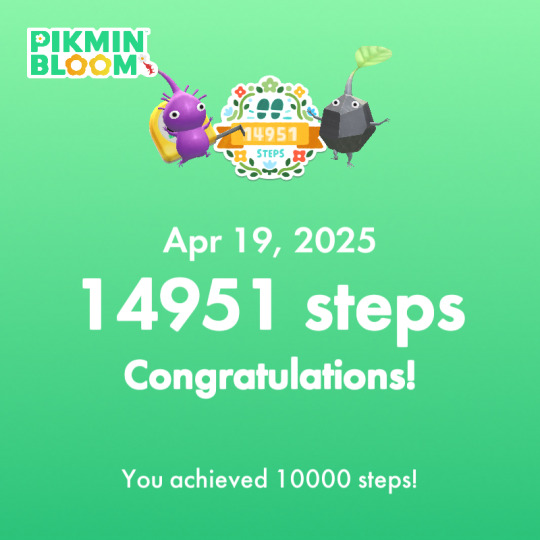
If you want to be my friend in Pikmin Bloom, my friend code is:
035654821443
2 notes
·
View notes
Video
youtube
THE BENEFITS OF PHYSICAL EXERCISE IN YOUR ROUTINE!
3 notes
·
View notes
Text
5 Super Simple Exercise Tips
With each New Year comes the determination to begin exercising. Perhaps even you made a promise to add more exercise into your day. If your efforts at exercising are not going as well as you had planned, take a look at these tips. They might help get you back on track.
Tip #1 – Do Something You Enjoy
Exercise doesn’t have to mean spending hours at the gym peddling away on a stationary bike. It doesn’t mean you have to spend money on exercise gadgets you will likely never use, either. Anything you do to get your body moving is going to be better than doing nothing. Walking is an easy exercise that you can do just about anywhere, in any climate. Situbondo Bike riding, dancing, gardening, weight lifting, swimming, playing a favorite sport, house cleaning and even playing in the yard with your children are just some of the ways you can add exercise into your daily routine.
Tip #2 – Schedule Time for Exercise
As you would a meeting or a doctor appointment, sometimes the only way to make time to exercise is to put it on your daily schedule. We’ve all got busy lives and we’re often so busy taking care of others that we never seem to make time for ourselves. Once exercise becomes part of your daily To-Do list, you’re more likely to do it. Some people have only a certain time during the day available for exercise while others will have to vary the time each day. Some people need a nudge and for them, exercising with a friend is a good solution. Choose whichever way works best for you. Just remember to actually go and do it!
Tip #3 – Remember that Exercise Can Energize
Even though you might feel too tired to exercise, give it a try anyway. You might be surprised to find how energized you feel while you’re at it and afterwards, when you’re finished. Exercise is a great stress-reliever too and if you know anything about stress, you know that it is one of the body’s biggest energy-sappers.
Tip #4 – Don’t be Afraid to Mix it up
Like anything that is done over and over again, exercise can become mundane. When you get bored with exercising, you’re less likely to keep at it. To keep from getting bored with your workout routine, change it. If you’re tired of walking, try cycling. If you’re into weight lifting, try alternating this with cardiovascular exercises throughout the week. Go bowling or play a game of tennis once in a while, and if you find you enjoy these types of activities, join up with a team.
Tip #5 – Always Begin by Warming up
Regardless of the type of exercise you choose, it is very important that you begin each session by warming up your muscles. Stretching helps prevent damage to muscle tissue and it gets your blood flowing. It gets your heart pumping, too. Just five minutes is all it takes to get your exercise session off to a good start.
2 notes
·
View notes
Note
do you have any advice for people looking to get into running but are extremely out of shape and overweight? like best ways you think to start slow without hurting yourself and build on it
Hi! Every time I get an ask from someone wanting to get into running it makes my day 100x better thank you sooo much for asking ❤️
I don't know what your definition of "extremely out of shape" is, but if you currently can't handle running for an extended period of time, work your way up with long walks, or walk + run intervals, until you can handle 30+ mins of continuous exercise. GET RUNNING SHOES FOR THAT ALSO. Your body will thank you.
My general beginner running tips post applies + I really recommend paying extra attention to joint care. Running is an extremely high-impact activity — you're slamming your entire weight on the ground 100+ times a minute, and the greater your weight the bigger the strain. I can't stress enough the importance of keeping your runs shorts at first and listening to your body (15 mins 3/4 x week is already a lot!) but generally, strengthening your lower body goes a long way towards healthy knee joints.
Strength: I've already recommended Jay Johnson's Strenght & Mobility routine, but if you're feeling fancy I'd also suggest working your way up to weighted squats, lunges, and romanian deadlifts (2-3 sets, 6-8 reps, using whatever you've got around the house that can serve as a weight). As I said in the og post, I can't recommend enough looking into core activation, which will help a lot if you have breasts that bounce when you run. Big boobs back pain is real.
Chafing prevention: this can be a bitch, unfortunately. Jiggly bits (inner thighs, skin folds, breasts) can chafe a lot, and if possible get leggings / shorts / bras with as few seams as possible and anti-glide gel — if you have declathon in your country, their anti-chafe cream is good and pretty cheap. If you have never heard of declathon, you're probably in the US and I know there are good brands over there also. (This part is unfortunately born out of anecdotal evidence, i.e. my dad, who went on a 10km jog and then couldn't walk for like a week. Chafing is the crotch killer)
Stretching! I'm a hypocrite and don't stretch nearly as much as I should, but don't be like me. Some stretching tips from sports physiologist / very Fast Guy Pete Pfitzinger under the cut.
Again I'm very flattered you asked me!! GOOD LUCK lmk how it goes <3
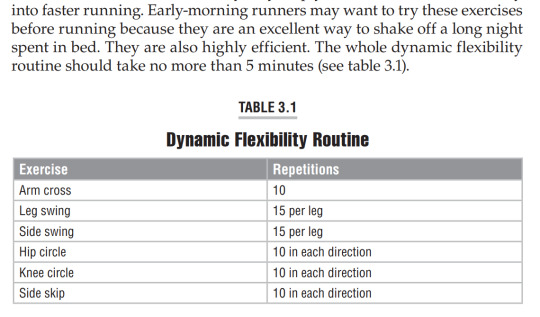
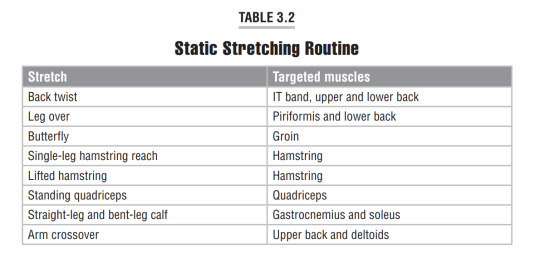

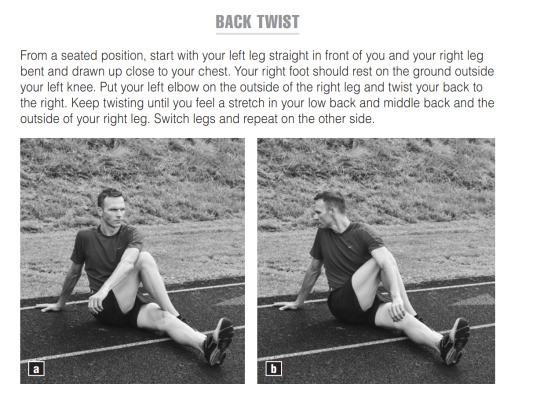
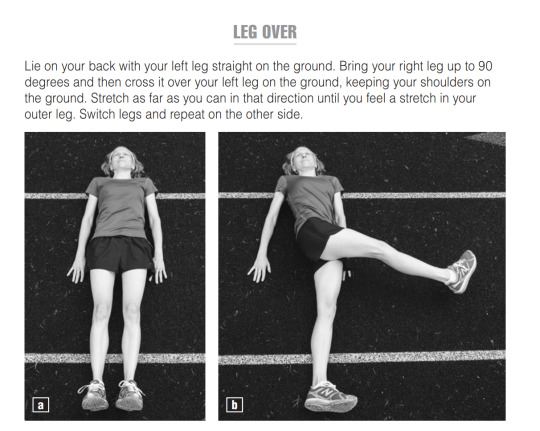





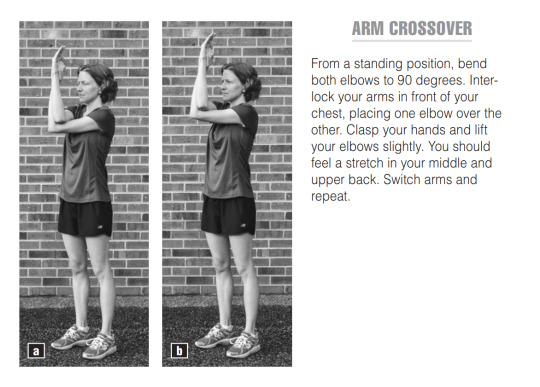
#ask#anonymous#jockposting#running#fitblr#exercise tips#running basics#exercise#runblr#long post#I really really suggest checking out r/running#it's a huge community and ime very supportive of newcomers and casual joggers#there IS a high percentage of beginners getting into running for weight loss reasons only which is why I didn't link it directly in the post#but overall the comm is not toxic about it and it's a very good entry point if you're looking for specific recs like brands or accessories#or have more detailed questions or want to browse people's experiences
65 notes
·
View notes
Text
So true, this defines everything I hate about exercising. But also, I found a swing dancing club at my university, and I met some excellent friends there and work up a sweat every lesson. They teach you for free, its fun, people are laughing, its like improv. Ive never been much of a dancer, but now I'm putting in effort towards getting better and I get compliments on my form. Becauze it's fun! I highly recommend anyone look for casual partner/group dance clubs in their area, its great exercise

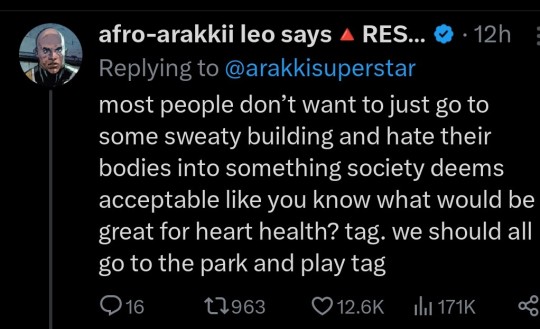
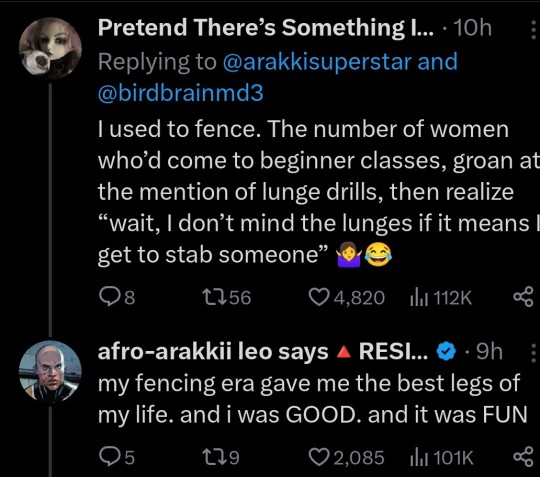
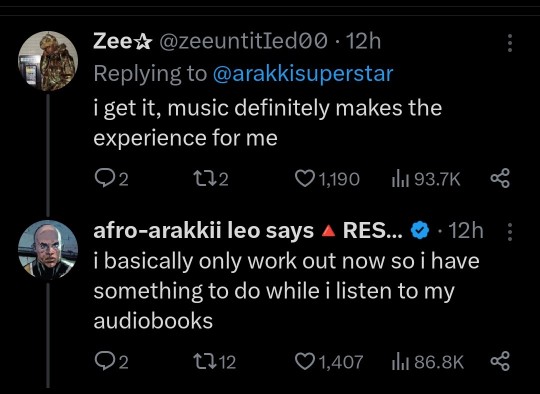
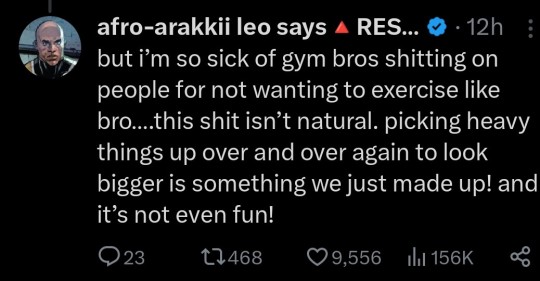
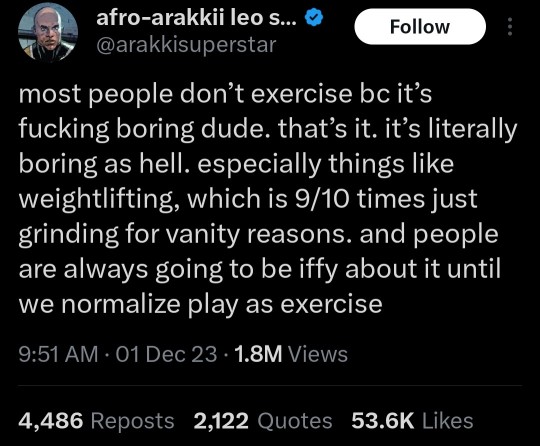

110K notes
·
View notes
Text

Fitness Friday
#FTM#F2M#transmasculine#trans man#transgenderman#non binary#FTM fitness#FTM workout#FTM wellness#fitness tips#genderfluid#genderqueer#agender#bigender#dem iboy#exercise tips#two spirit#genderflux#pangender#Fitness Friday#sensible-tips
23 notes
·
View notes
Text
"Just 5 Min to Calm & Slim!"

#meditation#meditation room#fitness women#fitness journey#fitness motivation#morning routine#morning fitness#exercise tips#fitness tips
1 note
·
View note
Text
The Connection Between Obesity and Hemorrhoids
Hemorrhoids, also known as piles, are swollen veins in the lower rectum and anus that can cause discomfort, itching, and bleeding. While there are many causes of hemorrhoids, one often overlooked but significant risk factor is obesity. In today’s lifestyle, where sedentary habits and high-calorie diets are common, understanding the link between obesity and hemorrhoids is crucial for prevention and management.
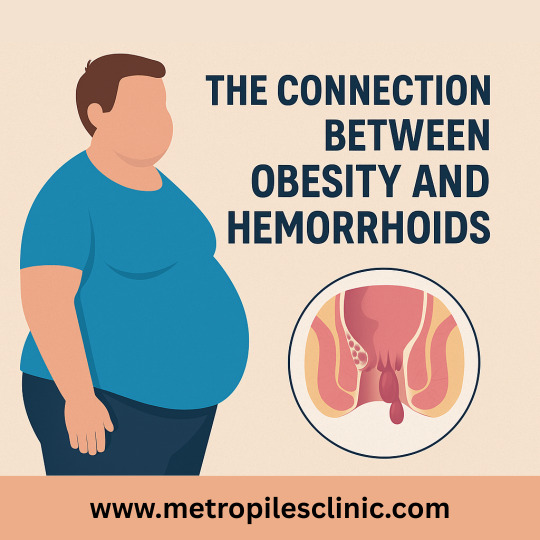
How Obesity Contributes to Hemorrhoids
Increased Pressure on Rectal Veins Excess body weight, especially in the abdominal area, puts added pressure on the pelvic and rectal veins. This pressure can lead to swelling of the veins in the rectum and anus, ultimately resulting in hemorrhoids.
Straining During Bowel Movements Obese individuals are more likely to experience constipation due to poor dietary habits. Constipation can lead to straining during bowel movements, which is a direct cause of hemorrhoids formation.
Sedentary Lifestyle A lack of physical activity slows down digestion and blood circulation. Prolonged sitting can also restrict blood flow in the rectal area, increasing the risk of hemorrhoids.
Poor Diet Choices High-fat, low-fiber diets common among people with obesity can result in irregular bowel movements. A lack of fiber reduces stool bulk, making it harder to pass and leading to constipation and straining.
Preventive Measures
Adopt a High-Fiber Diet: Include whole grains, fruits, vegetables, and legumes in your meals to improve digestion and regularity.
Stay Hydrated: Drinking plenty of water helps keep stools soft and easy to pass.
Exercise Regularly: Even light physical activity can improve bowel function and reduce pressure on the veins.
Maintain a Healthy Weight: Losing excess weight can reduce pressure on the rectal veins and lower the risk of hemorrhoids.
Final Thoughts
Obesity not only affects overall health but also increases the risk of developing painful conditions like hemorrhoids. Making lifestyle changes such as improving your diet, staying active, and maintaining a healthy weight can significantly lower your risk. If you’re experiencing symptoms of hemorrhoids, it’s important to consult a healthcare professional for proper diagnosis and treatment.
For more insights and expert care, visit www.metropilesclinic.com
#obesity#hemorrhoids#health#piles#healthylifestyle#doctors#healthcare#piles treatment#fissure treatment#treatments#pilestreatment#fissure#health benefits#treatment#exercise tips#health and fitness#fitness#workout#nutrition
1 note
·
View note
Text
Health and Fitness: A Comprehensive Guide to a Healthy Lifestyle
Health and fitness are two crucial aspects of our lives that determine our overall well-being. A healthy body and mind enable us to perform daily tasks efficiently, maintain high energy levels, and prevent chronic diseases. However, with the fast-paced modern lifestyle, unhealthy eating habits, and sedentary behavior, many people struggle to maintain optimal health and fitness.
This article explores the key aspects of health and fitness, including nutrition, exercise, mental well-being, and lifestyle changes. By understanding and implementing these factors, you can lead a healthier and more fulfilling life.
Understanding Health and Fitness
What is Health?
Health is a state of complete physical, mental, and social well-being. It is not merely the absence of disease but also the presence of a balanced and well-functioning body. The World Health Organization (WHO) defines health as "a state of complete physical, mental, and social well-being and not merely the absence of disease or infirmity."
What is Fitness?
Fitness refers to the ability of an individual to perform daily activities with ease, without experiencing excessive fatigue. It involves various components, including cardiovascular endurance, muscular strength, flexibility, and body composition.
Importance of Health and Fitness
Maintaining good health and fitness has numerous benefits:
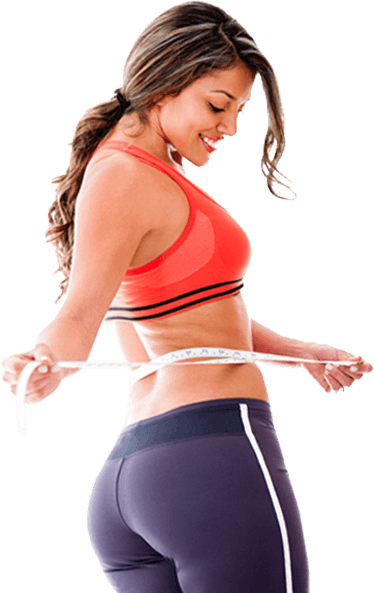
Prevention of Diseases – Regular exercise and a balanced diet help prevent chronic diseases like heart disease, diabetes, and obesity.
Improved Mental Health – Exercise releases endorphins, which reduce stress and promote mental well-being.
Increased Energy Levels – A healthy lifestyle enhances stamina and boosts overall energy.
Better Sleep Quality – Physical activity and a proper diet contribute to restful sleep.
Stronger Immunity – Proper nutrition and exercise strengthen the immune system.
Improved Quality of Life – A fit and healthy body allows for an active and fulfilling life.
Nutrition: The Foundation of Good Health
Macronutrients and Micronutrients
A well-balanced diet consists of macronutrients (carbohydrates, proteins, and fats) and micronutrients (vitamins and minerals).
Carbohydrates – Provide energy for the body (sources: whole grains, fruits, and vegetables).
Proteins – Essential for muscle repair and growth (sources: lean meats, fish, eggs, legumes).
Fats – Support brain function and hormone production (sources: nuts, seeds, olive oil).
Vitamins and Minerals – Boost immunity, strengthen bones, and support metabolism (sources: fruits, vegetables, dairy).
Hydration and Its Importance
Water is crucial for bodily functions, including digestion, circulation, and temperature regulation. It is recommended to drink at least 8 glasses (2 liters) of water daily.
Healthy Eating Habits

Eat a variety of foods to get all essential nutrients.
Avoid processed and junk foods high in sugar and unhealthy fats.
Practice portion control to prevent overeating.
Include fiber-rich foods for better digestion.
Exercise: The Key to Fitness
Types of Exercise
Cardiovascular Exercise – Improves heart health and endurance (examples: running, cycling, swimming).
Strength Training – Builds muscle mass and strengthens bones (examples: weightlifting, bodyweight exercises).
Flexibility Training – Enhances mobility and prevents injuries (examples: yoga, stretching).
Balance and Coordination Exercises – Improves stability and reduces the risk of falls (examples: Tai Chi, Pilates).
Exercise Guidelines
Engage in at least 150 minutes of moderate-intensity exercise per week.
Include strength training exercises at least twice a week.
Warm up before and cool down after workouts to prevent injuries.
Benefits of Regular Exercise
Enhances cardiovascular health.
Strengthens muscles and bones.
Helps in weight management.
Boosts mood and mental clarity.
Mental Health and Well-being
Connection Between Physical and Mental Health
A healthy body contributes to a healthy mind. Regular exercise releases endorphins, which help reduce stress, anxiety, and depression.
Stress Management Techniques
Meditation – Helps calm the mind and improve focus.
Deep Breathing Exercises – Reduces stress and lowers blood pressure.
Spending Time in Nature – Boosts mental well-being and relaxation.
Importance of Sleep
Aim for 7-9 hours of sleep per night for optimal functioning.
Maintain a consistent sleep schedule.
Avoid screens and caffeine before bedtime.
Healthy Lifestyle Habits
1. Maintaining a Healthy Weight
Monitor calorie intake and ensure a balanced diet.
Engage in regular physical activity.
2. Avoiding Harmful Substances
Quit smoking to prevent respiratory and cardiovascular diseases.
Limit alcohol consumption to maintain liver health.
Reduce caffeine intake for better sleep quality.
3. Social and Emotional Well-being
Maintain strong relationships with family and friends.
Engage in hobbies and activities that bring joy.
Seek professional help if dealing with mental health issues.
Health and Fitness for Different Age Groups
1. Children and Teenagers
Engage in at least 1 hour of physical activity daily.
Encourage outdoor play and sports.
Ensure a balanced diet for growth and development.
2. Adults
Maintain a routine that includes exercise, work-life balance, and proper nutrition.
Manage stress through relaxation techniques.
3. Seniors
Focus on low-impact exercises like walking, yoga, and swimming.
Strengthen bones and joints with weight-bearing activities.
Monitor health regularly and maintain medical check-ups.
Common Health and Fitness Myths Debunked


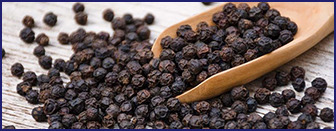
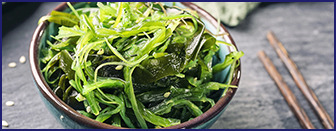
1. Myth: You Need to Exercise for Hours Daily to Stay Fit
Fact: 30-45 minutes of exercise per day is sufficient for maintaining fitness.
2. Myth: Carbs Are Bad for Health
Fact: Whole carbs like brown rice and quinoa are essential for energy.
3. Myth: Only Intense Workouts Lead to Weight Loss
Fact: Even moderate activities like walking and yoga contribute to weight loss.
4. Myth: You Can Spot-Reduce Fat
Fact: Fat loss occurs throughout the body, not just in specific areas.
#health and fitness tips#exercise#workout#fitness#fat belly#fat loss#i want to lose weight#weight loss#lose weight fast#work out#exercise tips#belly fat
1 note
·
View note